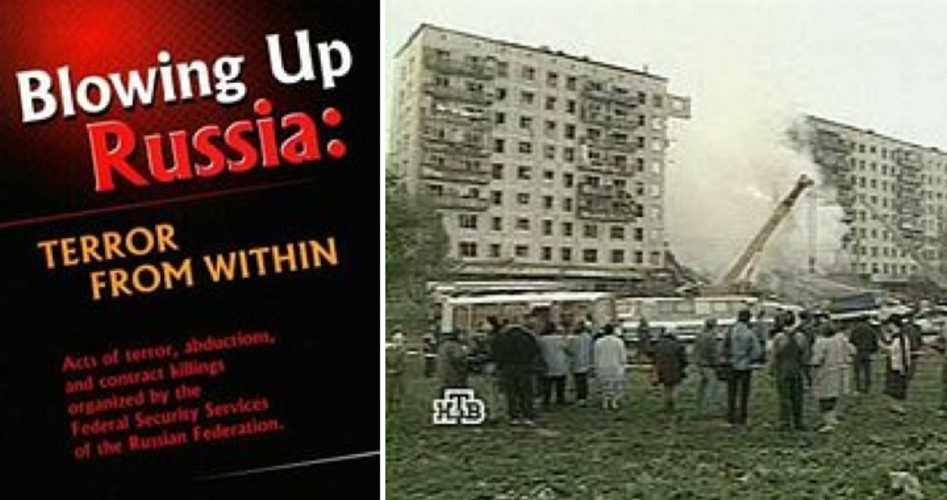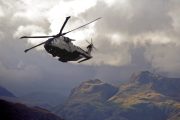
Samuel Johnson declared in 1758: “Among the calamities of war may be justly numbered the diminution of the love of truth, by the falsehoods which interest dictates and credulity encourages.”
And when a nation seeks to wage indefensible war, that nation will use lies as its justification. Over 10 years ago, Rafid Ahmed Alwan al-Janabi (“Curveball”) lied about the presence of weapons of mass destruction in Iraq, and the result was war. Now, disinformation is being spread about Ukrainian “atrocities” in what appears to many observers to be a Russian military and propaganda buildup for war against Ukraine.
Several websites are endeavoring to keep track of the Russian disinformation, but the amount of the propaganda and its wide distribution leave activists with a profoundly difficult task ahead of them. One such website, StopFake.org, has repeatedly demonstrated that anti-Ukrainian agitators have been using wartime pictures from other nations, other wars, and even stills from movies, claiming that the pictures present contemporary events in Ukraine.
For example, one of the most recent pictures circulating on the VK social network (the second largest network in Russia after Facebook) shows a burning tank and declares, “I want to congratulate you, comrades! Junta revenge has started across Donbass, as we promised! No mercy for those who came to our land with drawn weapons!” The only problem with such congratulatory proclamations is that the picture was taken in China — not Donbass — and dates to 1989. Another propaganda picture shows a weeping girl sitting beside her dead mother with the legend: “This is democracy, baby — Ukrainian army is killing Donbass people.” However, the picture is not from Donbass; it is a still from the 2010 Russian-Belarusian movie, Brest Fortress.
Another site, UkraineInvestigation.com, offers extensive documentation disproving the claim that a Ukrainian jet fired a missile at the Regional State Administration building in Luhansk. A careful reconstruction of events offered by UkraineInvestigation shows that it was impossible for a jet to have fired the missile; instead, it postulates that while the jet may have fired flares to protect it from anti-aircraft missiles, what most likely struck the building was an RPG (rocket-propelled grenade) fired by terrorists.
But fictionalized events are not the only weapons that the Russians are using against Ukraine. As Robert Zubrin wrote for National Review on May 13, the Russian regime has been cynically exploiting tragedies such as the fire in Odessa to build its case for intervention; in fact, Zubrin argues that the Russian FSB may have been directly responsible for the Odessa fire. Zubrin believe such a scenario is possible because Putin has been implicated in similar attacks on civilians in the past:
Specifically, in 1999, when he had just stepped down as the head of the FSB and become prime minister, Putin murdered over 300 Russians by having the FSB explode a series of bombs in apartment buildings in Moscow in order to justify a new war in Chechnya and seize dictatorial powers. All known evidence indicates that the FSB was responsible for those bombings, because they stopped only when local Russian cops on the beat caught FSB agents red-handed in the act of planting explosives for the next “terrorist” attack.
(Putin’s alleged involvement in the Moscow bombings is also examined at length in Masha Gessen’s book The Man Without A Face — The Unlikely Rise of Vladimir Putin. The New American has reported extensively over the past several years on the evidence indicating that various “terrorist” events in Russia have actually been provocations perpetrated by Putin’s KGB/FSB. See for instance here, here, and here.)
As Zubrin documents using the words of Aleksandr Dugin (whom Foreign Affairs has referred to as “Putin’s Brain”), such attacks and Russian disinformation would be consistent with a scenario that has been called “Russian Spring:
This scenario, whose name “Russian Spring” has become a slogan carried on banners in many of the demonstrations by the Russian-backed separatists in eastern Ukraine, lays out a plan for creating havoc resulting in a civil war in Ukraine and consolidation of totalitarian dictatorship in Russia. In Dugin’s scenario, this would be followed by a Russian invasion of Ukraine, with further operations leading to complete Russian domination of Europe and the subsequent creation of a Moscow-centered Eurasian Union stretching “from Lisbon to Vladivostok.”
A key section reads as follows:
- … In Russia itself, the regime evolves, and starts to clean out the fifth column.
- In Novorossia [the Kremlin’s revived tsarist term for a large region of eastern and southern Ukraine], resistance increases and gradually moves to the phase of direct rebellion against the Kiev henchmen. There is a bloody civil war. Russia deploys massive effective support structure; symmetrically, the West supports Kiev. At a certain moment, in response to the sabotage in Russia and bloody actions of the nationalists and the repressive apparatus of Kiev against civilians and the east of Ukraine, Russia sends its troops into the east.
For Putin’s FSB, such a program of distraction, disinformation, and terror would be a return to the old “status quo.” As Shultz and Godson observed in their 1984 book Dezinformatsia:
While the United States consistently was characterized as the major threat to world peace, careful analysis of Soviet propaganda indicates that in reality the Kremlin did not perceive any direct threat or challenge to its security interests emanating from alleged US aggressiveness and militarism. The incongruity between Soviet propaganda and Moscow’s actual threat perception may be explained partially by considering the tactical foreign policy objectives of the Kremlin rather than its immediate security concerns.
In other words, Moscow’s primary purpose in employing foreign propaganda is not to warn the United States and its NATO allies of genuine Soviet anxiety. Rather, Soviet leaders to a great extent use this instrument as part of a political-military strategy that seeks to weaken the Western alliance.
With Vladimir Putin firmly ensconced in power, the Kremlin has not changed its ways from the “old days”: The FSB has taken over the role that was once fulfilled by the KGB. “False flag” cases of fictionalized atrocities are intended to drive a wedge between Ukraine and the nations of the West.
Recently released information appears to demonstrate that Russia may have begun active preparations for war back in 2011. As opposition leader Boris Nemtsov recently documented, Russian military expenditures began to dramatically increase in that year, even as the government has cut expenditures in other areas of the budget:
A government’s priorities and plans are most clearly shown in its budget, and over the last four years, the budgets Vladimir Putin has proposed and imposed are those of a leader preparing for war rather than someone concerned about the needs of the Russian people, according to Boris Nemtsov.
In a report on Ekho Moskvy on Saturday, Nemtsov, a Russian opposition leader, publishes a table showing Russian budgetary figures by sector and year since 2011. Over that period, military spending has risen 80 percent, and spending on the special services [intelligence] and police has gone up 50 percent.
Putin’s priorities are obvious, he says. They are headed by “preparation for war and repressions inside the country.” They do not include education, health care or infrastructure development.
Related articles:
Chechen Terrorism: Made in Moscow
Hizb ut-Tahrir: KGB-FSB Connection?
Photo is of book and photograph of the Russian apartment bombings of 1999


